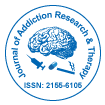Nuestro grupo organiza más de 3000 Series de conferencias Eventos cada año en EE. UU., Europa y América. Asia con el apoyo de 1.000 sociedades científicas más y publica más de 700 Acceso abierto Revistas que contienen más de 50.000 personalidades eminentes, científicos de renombre como miembros del consejo editorial.
Revistas de acceso abierto que ganan más lectores y citas
700 revistas y 15 000 000 de lectores Cada revista obtiene más de 25 000 lectores
Indexado en
- Índice de fuentes CAS (CASSI)
- Índice Copérnico
- Google Académico
- sherpa romeo
- Abrir puerta J
- Revista GenámicaBuscar
- Claves Académicas
- TOC de revistas
- SeguridadIluminado
- Infraestructura Nacional del Conocimiento de China (CNKI)
- Biblioteca de revistas electrónicas
- Búsqueda de referencia
- Universidad Hamdard
- EBSCO AZ
- OCLC-WorldCat
- Catálogo en línea SWB
- Biblioteca Virtual de Biología (vifabio)
- publones
- Fundación de Ginebra para la educación y la investigación médicas
- Pub Europeo
- ICMJE
Enlaces útiles
Revistas de acceso abierto
Comparte esta página
Abstracto
Frequency of Serotonin Transporter Promote Gene Polymorphism in Opioid Addicts
Tahere Nazari, Nasrin Ghasemi and Amir Hossein Mansourabadi*
Background: The human serotonin transporter promoter (5-HTT) gene genotype was previously reported to be associated with temperament and personality traits at risk for substance abuse in the subjects with antisocial behaviour. Association studies of polymorphism in the promoter region of this gene in addiction have shown conflicting results. A common 44-base pair insertion/deletion polymorphism in the region of 5-HTT has been observed. This biallelic functional polymorphism designated long (L) and short (S) promotors, which affect 5-HTT gene expression since the short variant is associated with lower transcriptional activity. Since there is strong evidence of a disturbance in brain serotonergic transmission among antisocial, impulsive, anxiety, and different kinds of addiction, the purpose of present study was to evaluate the frequency of these genotypes among adolescents with opioid addiction.
Method: One hundred and forty opium dependent males, aged 20-50 years, entered the study, after signing informed written consent. They referred to the rehabilitation centre to treat their addiction. Three questionnaires, general, Minnesota Multiphasic Personality Inventory (MMPI), genetic and family pedigree) were filled out by experts. Information obtained from these questionnaires included their age, gender, consanguinity of parents, type of substance abuse, socioeconomic position, psychiatric disorder and family history of drug abuse and any other diseases. First, behavioural disorders were studied in addict cases. Then, polymorphic region of the human serotonin transporter gene was evaluated and compared between 31 addicts and 31 normal volunteer matched in age, sex and socioeconomic situation as controls. Whole blood sample (2ml) from each participant was collected on sterile tube and stored for subsequent extraction of DNA using phenol-chloroform method. Then DNA was PCR-amplified. The PCR products were resolved in 2.5% agarose gel. Data were analysed using chi-square test and P < 0.05 was considered significant.
Results: Short allele frequency in cases and controls were 0.532 and 0.387 respectively. Long allele frequency in cases and control were 0.468 and 0.613 respectively. Despite of OR =1.8 this study indicate no significant association between frequency of short allele and addiction to opioid.
Conclusions: Although previous findings indicated association of short allele with addiction, this study did not confirm these results. Several possibilities exist for these discrepant results, including small sample size, potential population stratification, and categorical phenotypes.
Revistas por tema
- Agricultura y acuicultura
- Alimentación y Nutrición
- Bioinformática y biología de sistemas
- Bioquímica
- Ciencia de los Materiales
- Ciencia general
- Ciencias Ambientales
- Ciencias Clínicas
- Ciencias farmacéuticas
- Ciencias Médicas
- Ciencias Sociales y Políticas
- Ciencias Veterinarias
- Enfermería y atención sanitaria
- Física
- Genética y biología molecular
- Geología y Ciencias de la Tierra
- Ingeniería
- Inmunología y Microbiología
- Química
Revistas clínicas y médicas
- Anestesiología
- Biología Molecular
- Cardiología
- Cirugía
- Cuidado de la salud
- Dermatología
- Diabetes y Endocrinología
- Enfermedades infecciosas
- Enfermería
- Gastroenterología
- Genética
- Inmunología
- Investigación clínica
- Medicamento
- Microbiología
- Neurología
- Odontología
- Oftalmología
- Oncología
- Pediatría
- Toxicología

 English
English  Chinese
Chinese  Russian
Russian  German
German  French
French  Japanese
Japanese  Portuguese
Portuguese  Hindi
Hindi